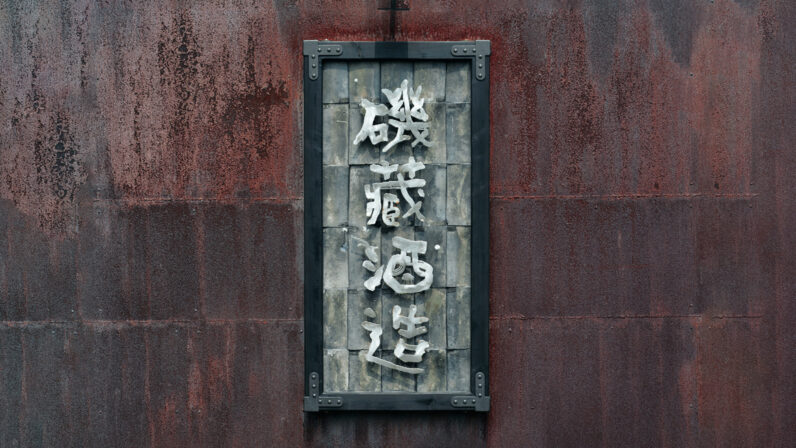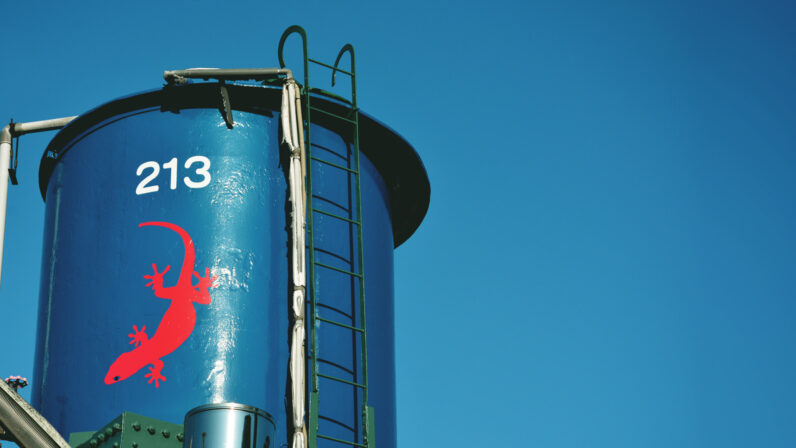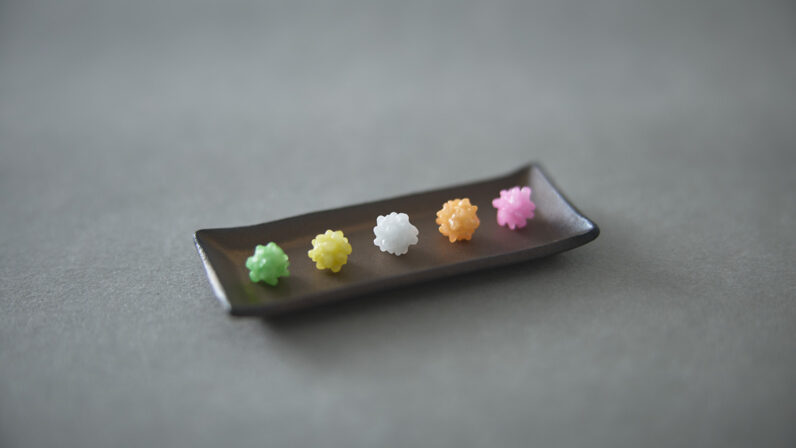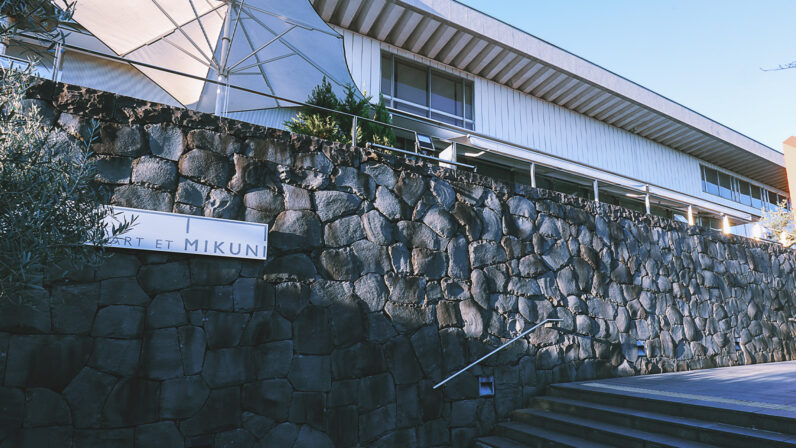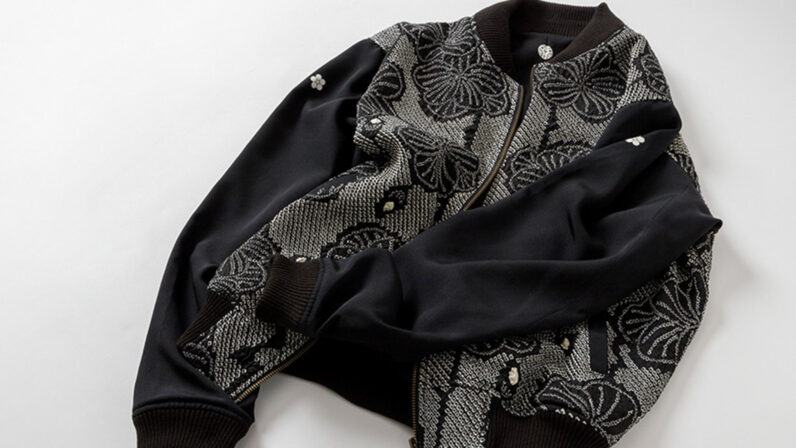In the 17th century, London’s coffee houses played a key influential role leading up to the English revolution. Around the same time, Japanese porcelain known as Arita ware was born in Saga Prefecture, Kyushu. Formerly renowned worldwide under the name Imari, this pottery industry declined during Japan’s economic growth after World War II. Now, this historic pottery industry is on the brink of a revival, with a small revolution starting in coffee shops in Tokyo.

An Exclusive Coffee Shop Named ‘Cokuun’
Hide Izaki started working at his father’s coffee shop, ‘Honey Coffee,’ in Fukuoka City at the age of 16.At 17 years old, he made his debut in the Japan Barista Championship (JBC). The following year, he reached the finals, making waves in the coffee industry. He joined the specialty coffee supplier Maruyama Coffee while starting university at the same time. Then, at the age of 22, he won the JBC, setting a record as the youngest champion in history. Furthermore, at 24 years old, he became the first Asian champion in the World Barista Championship (WBC) and was crowned the world’s best barista.

Hide Izaki is the son of Katsuhide Izaki, a prominent figure who serves as an international judge for the ‘Cup of Excellence,’ an American competition that determines the best coffee beans of the year.
Since then, he has been working independently as a coffee consultant, showcasing his skills around the world. His craftsmanship can be experienced at a small coffee bar akin to a tea room called ‘Cokuun’ located in Omotesando, Tokyo.

Cokuun is a unique coffee shop with only four seats, offering a full-course coffee experience along with conversations with Hide Izaki himself. It’s reported that most visitors are tourists from overseas.
I had heard rumors about a secretive space offering a unique coffee omakase experience that required reservations, but I never expected the day would come when I could actually visit.
The individual who provided me with this opportunity was Tetsu Matsumoto, the president of a company called ‘arita porcelain lab.’
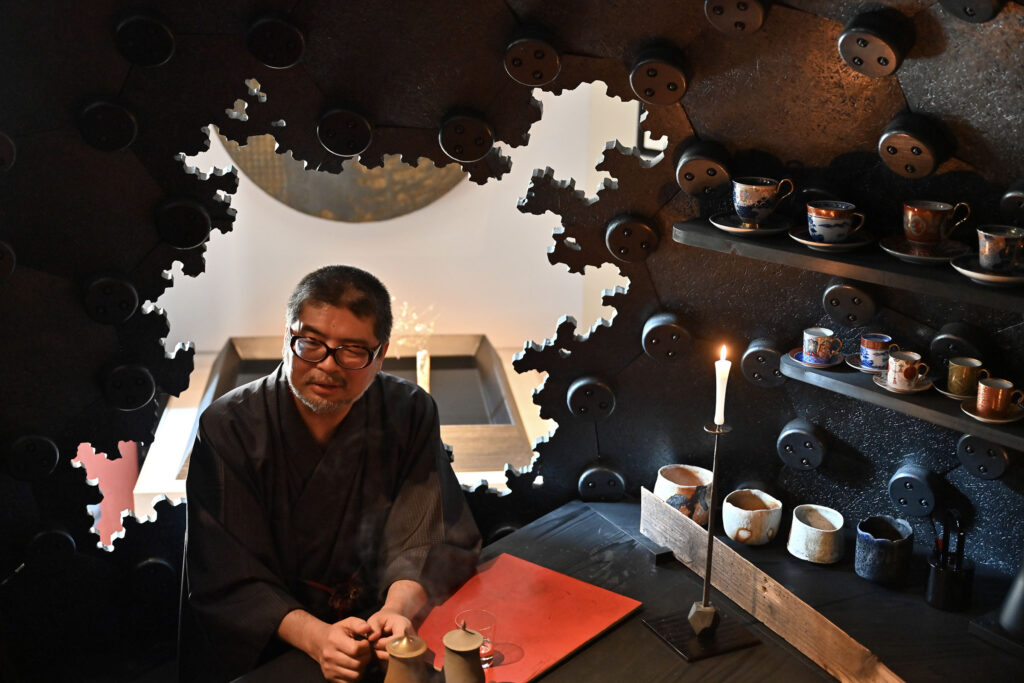
Tetsu Matsumoto
Arita Ware: The White Porcelain that Swept the World as Imari
I met Mr. Matsumoto, the president of arita porcelain lab, about three years ago. As their name suggests, they are a prominent manufacturer of Arita ware, known as one of Japan’s top porcelain producers.
While Arita ware is more historically famous abroad under the name Imari, in contemporary terms, much of what is labeled as Imari porcelain actually originates from Arita in Saga Prefecture. This is because Imari refers to a port name where porcelain from Arita, as well as neighboring areas like Hasami and Mikawachi, was shipped. Among these adjacent porcelain-producing regions, Arita was the central location.
The shift from calling it Imari to Arita came about due to changes in logistics and commerce driven by the development of the railway network in the 20th century. One key figure in this transition was Shonosuke Matsumoto, a financial businessman and politician who supported local industry development by establishing a bank for the common people in Arita and contributed to the opening of the Arita railway station in 1909. He was also known as the third-generation Yazaemon Matsumoto. Tetsu Matsumoto holds the title of the seventh-generation Yazaemon Matsumoto.
Innovation in Arita Ware
The organization founded by Yazaemon Matsumoto in 1804 has a history of evolving into a major company representing Arita from the third generation onward. However, like many traditional industries in Japan, as the market internationalized approaching the 21st century, they struggled to adapt to post-war Japanese business practices. By the early 21st century, despite being one of the largest family-owned kilns, they faced significant challenges with debts of 2 billion yen and annual revenue of only 2 billion yen, pushing them to the edge.
The seventh generation to take over was Tetsu Matsumoto. Shortly after assuming this role, the business faced financial challenges, leading to civil rehabilitation and effectively started anew from bankruptcy. Surprisingly, this bankruptcy was precisely what allowed the genius of Tetsu Matsumoto to blossom. Recognizing that the current path was unsustainable, he was inspired to rethink the value of Arita ware and take decisive action.
He developed a method of showcasing traditional Arita ware that respects its heritage while adapting its presentation to seamlessly fit into contemporary living and commercial spaces.
The resulting Arita ware is finished in a monochrome style by applying a slightly textured glaze to the porcelain surface to achieve a matte texture. This approach avoids using multiple colors and incorporates unique paints like gold or platinum.
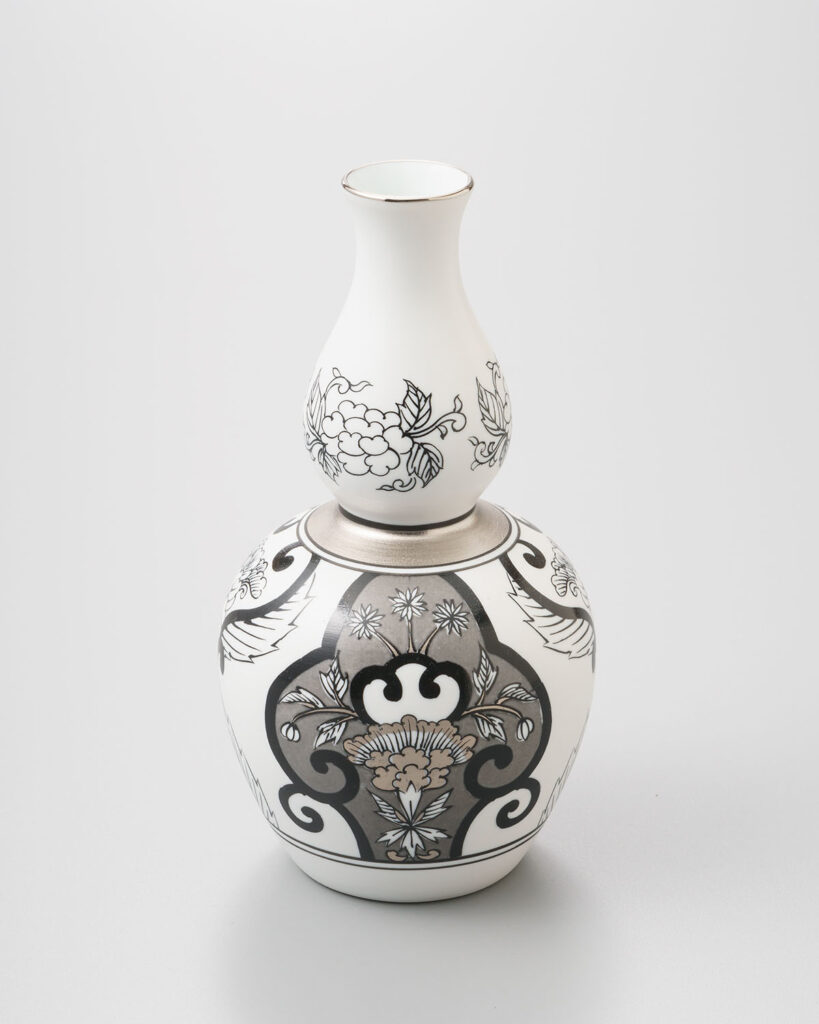
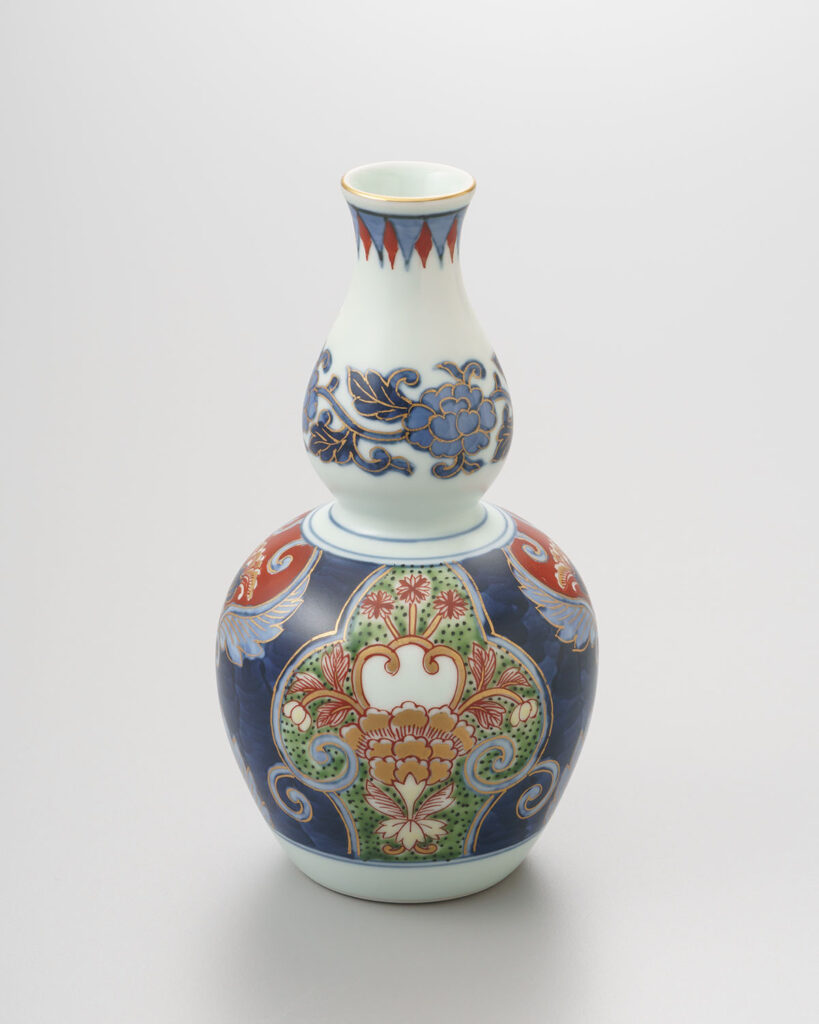
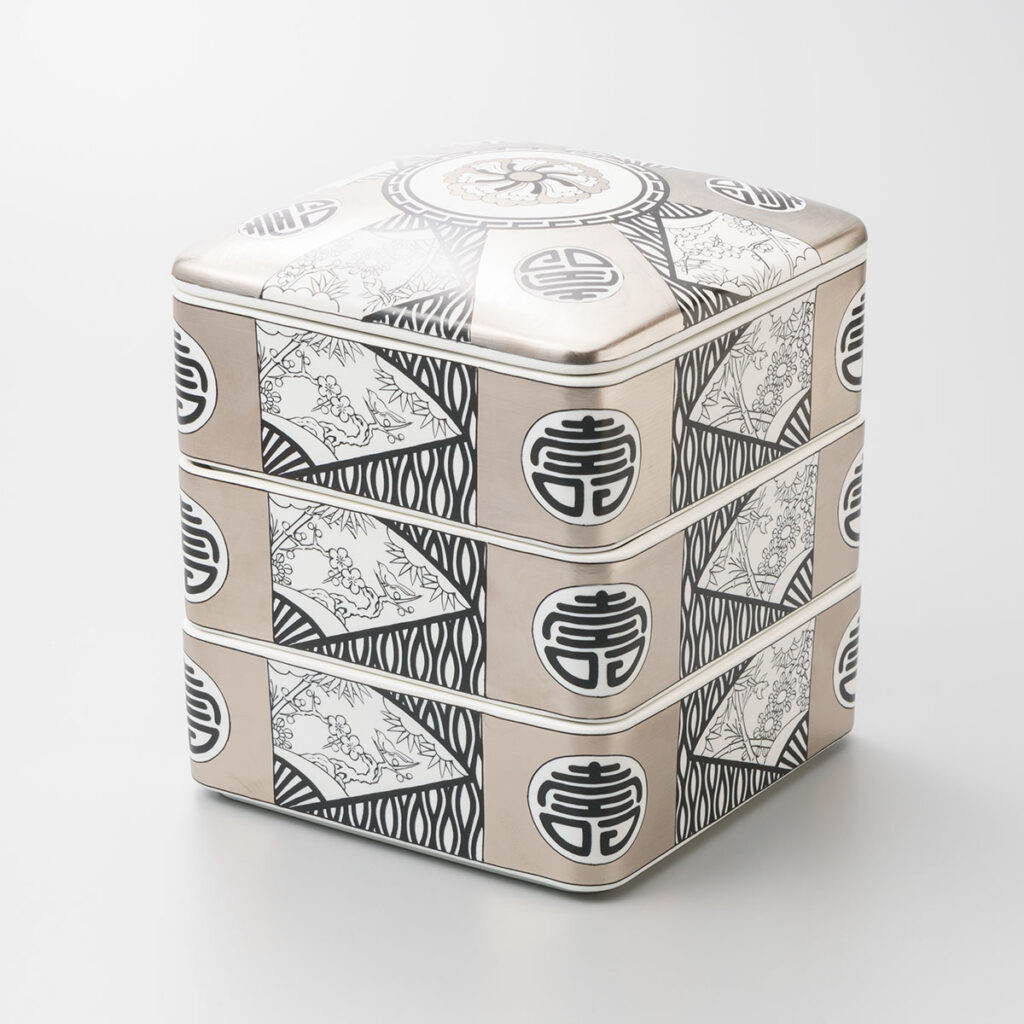

Even if the shape and pattern remains traditional, this alone can instantly give the vessel a modern appearance. Once that distinction was made, the story became clear, which is often how innovations unfold.
Initially conceived as a small-scale kiln-direct sales series, Mr. Matsumoto’s designs were branded as ‘arita porcelain lab’ with a focus on overseas markets. This innovative interpretation of Arita ware ultimately captured the attention of discerning customers worldwide and received high acclaim. As a result, it became the cornerstone of Matsumoto Yazaemon’s business, and the brand name became the company name. In response to growing popularity, the styles increased and diversified.
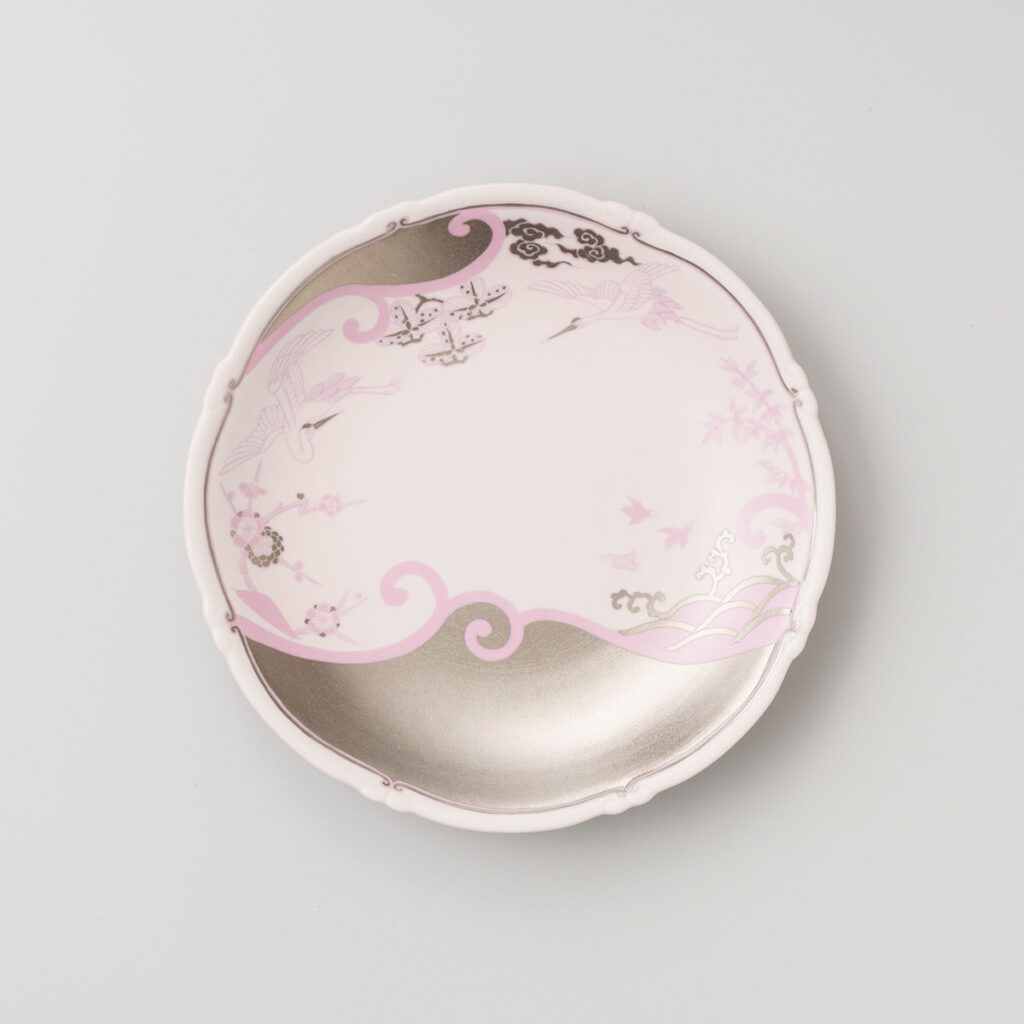
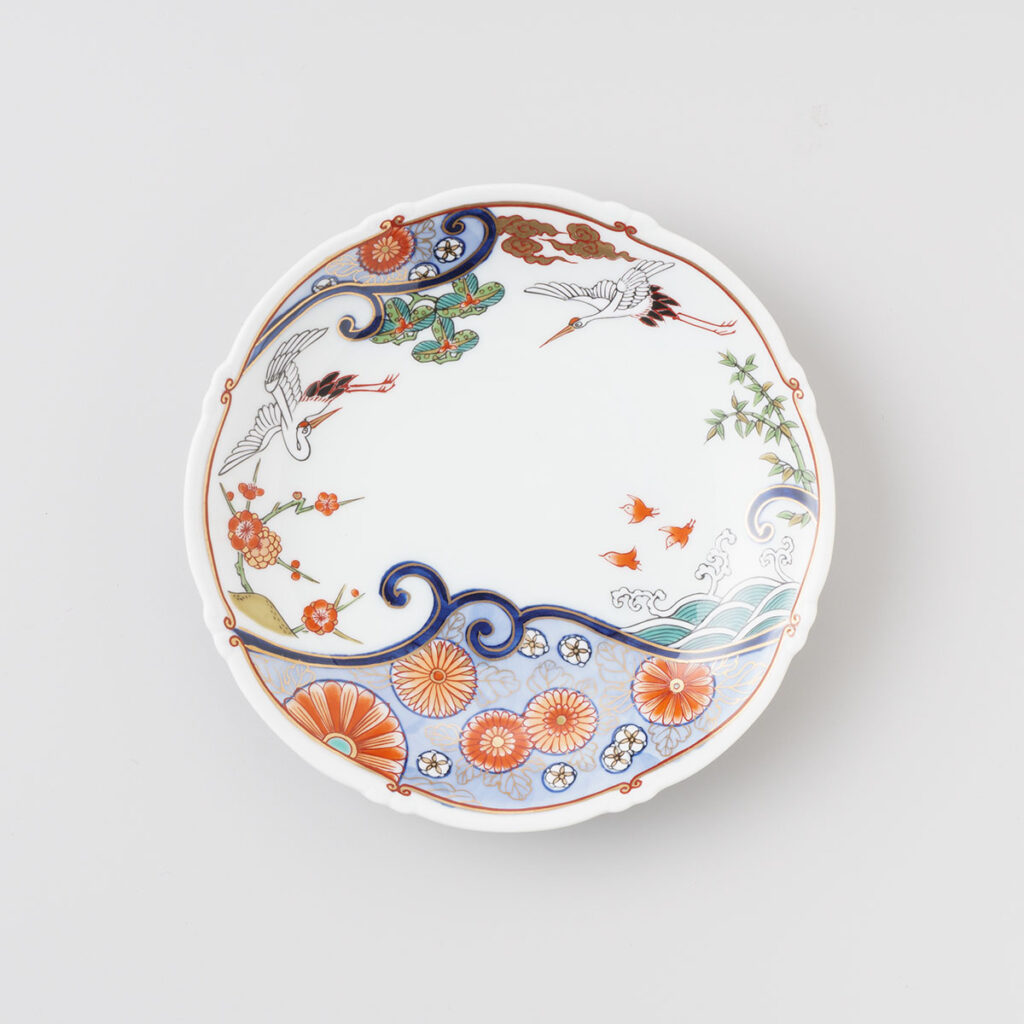
This series began with patterns in platinum and gold, both with and without designs. Over time, a variety of unique color variations were introduced, including a distinctive cherry blossom pink as shown in the photo.

Designs in a style similar to traditional Arita ware but with a modern twist are also being created. One example is a piece that modernizes the design of the rising sun and auspicious pattern (Asahi-Kisshomon 旭日吉祥紋), traditionally passed down in Arita ware, depicted in gold and wine red. ‘Asahi-Kisshomon Wine Red’ is priced at 16,500 yen (including tax) and packaged in a decorative box. Size: width 255mm x height 28 mm.

Here is an example of tableware used at the Mandarin Oriental in Paris. Its subtle design and the Japanese elegance enhance the presentation of ingredients, making it a popular choice in prestigious restaurants. Additionally, there are collaborations with traditional European companies, where they oversee the design and production of tea sets and perfume bottles.
Since its initial inception, almost 10 years have passed, and arita porcelain lab’s Arita ware has become a solid representative style of the craft.
More recently, they have also launched a diffusion brand called ‘apl,’ specializing in Arita ware that achieves a matte texture during firing by incorporating glaze into the clay beforehand, offering an eco-friendly and cost-effective approach.

An apl rice bowl from the apl series. This series is characterized by its unpainted design, with lines that create a textured appearance on the thin porcelain that allows light to shine through.
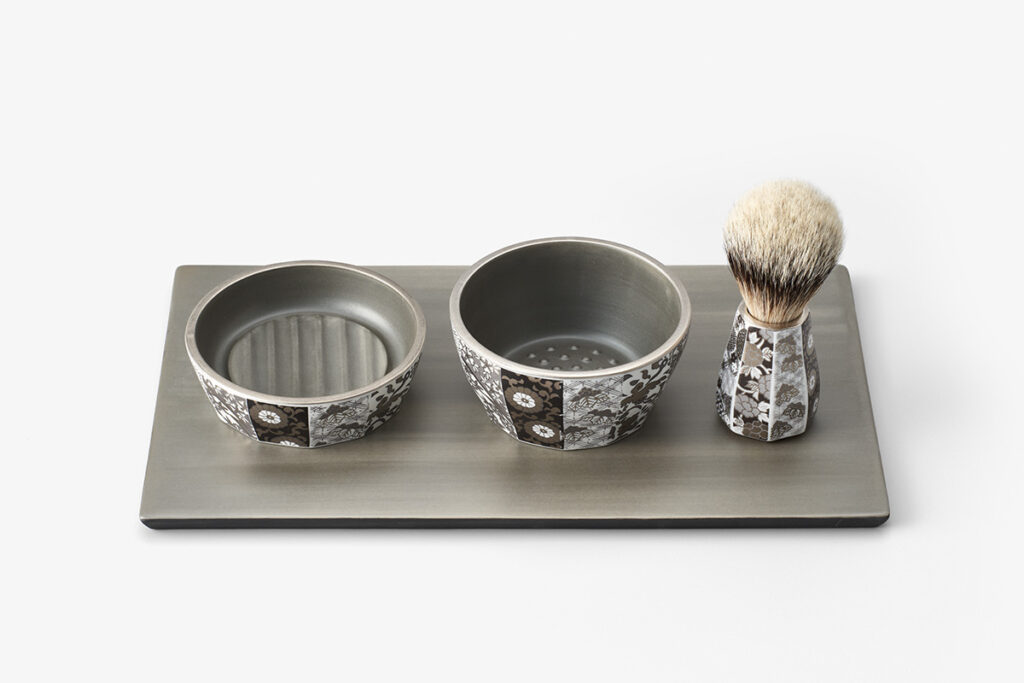
Around the same time as apl’s inception, a limited edition shaving set was launched in collaboration with Japan’s world-renowned barber, Hiro Mazda, and Kumanofude (Kumano brushes).
Meanwhile, even with the ongoing success, Mr. Matsumoto was striving to create a distinctly unique style of Arita ware that contrasted with apl.
An Artisanal Vision and Human Touch
That was the reason I was invited to Cokuun this time. Mr. Matsumoto unveiled his special Arita ware here. When we think of special Arita ware, we often envision pieces with hand-painted designs by artists or large, intricate art pieces. However, Mr. Matsumoto had already explored and executed these ideas. His vision for something special was distinct. And this unique vision seemed to have connected Mr. Matsumoto and Mr. Izaki.
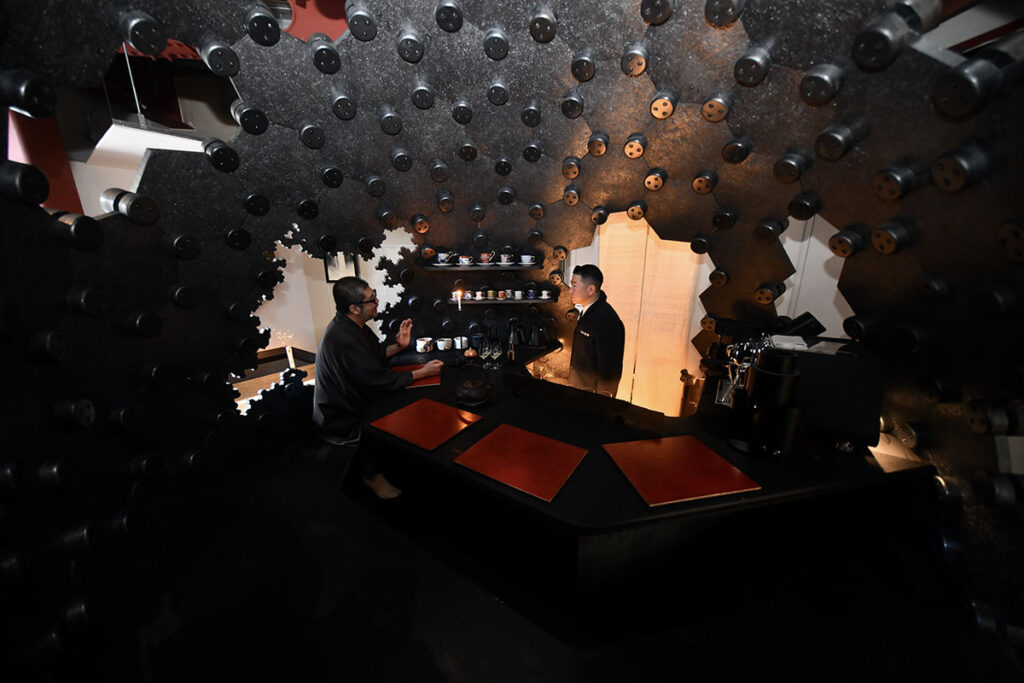
As I sat in Cokuun, in front of me appeared a uniquely shaped coffee cup named ‘The M,’ which was developed in collaboration with Mr. Izaki.
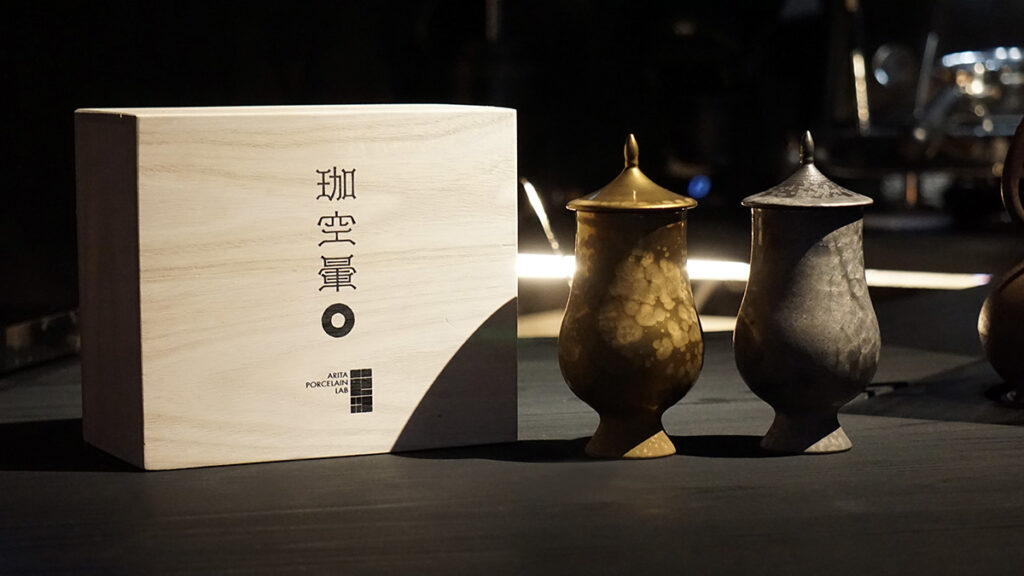
Named ‘The M,’ this coffee cup was created by Mr. Izaki and Mr. Matsumoto. As you can see, its shape resembles that of a whiskey nosing glass. They arrived at this design after experimenting and refining it over the two and a half years since they met.
The intention behind this became clear during our conversations. It arose when I asked Mr. Izaki, “Why are you not hesitant to use rare beans that coffee professionals would be eager to get their hands on, and even not hesitant to add milk to the coffee or combine it with fruit syrup?”

Mr. Izaki makes strawberry milk coffee using rare coffee beans.
Mr. Izaki explained, “That’s because at Cokuun, we treat coffee strictly as just one of the ingredients that’s part of the whole creation” He then went on to say, “Speaking of why Japan is struggling economically, it’s because of cost-based thinking.”
In response, Mr. Matsumoto referenced Arita ware, comparing its artisanal production process to mass-produced items made by pouring clay into molds and firing them in kilns.
“Arita ware is crafted by artisans. Without artisans, it wouldn’t be Arita ware,” he added.
While this conversation might seem enigmatic out of context, both of them believe that the value of an object shouldn’t be determined solely by its cost, such as the price of materials or a famous name attached to it. Value should take more into consideration including the accumulation of people’s daily work, thought processes, and the significance of individuals involved in production.

At the Arita Porcelain Lab factory in Arita
“This product marks the first step towards realizing Arita Porcelain Lab’s vision for the next decade, leading up to our 230th anniversary.”
The M is a cup crafted to capture the essence of coffee aroma, featuring a thin profile, especially at the lip for a smooth touch that complements the coffee experience without hindrance, all while embodying aesthetic beauty as envisioned by Mr. Izaki.
“You can pour anything into this cup, but The M was designed to be a vessel for savoring meticulously brewed coffee,” explains Mr. Izaki.
“From grinding beans to the last sip of cooled coffee, this cup is meant to elevate the experience to a premium level. It’s a coffee cup that not only enhances the entire coffee-making process but also adds an artistic touch to any setting—it’s a cup you’d never want to hide away out of sight.”

In contrast to aesthetics, practicality was not a driving factor when creating The M.
“I don’t necessarily think it’s always good to tailor tools to fit people. Instead of adding a handle just because the cup is hot, people should simply find a way to hold it. I don’t believe that increasing convenience and functionality should compromise the beauty of an object. You know, there’s a certain coolness to driving a challenging car and mastering that coolness, right?”
There were numerous technical challenges. The irregular shape, combined with its thinness and bowl-like bottom, presented significant difficulties in making the porcelain viable, and the shape made it difficult to stabilize the glaze. Furthermore, to achieve a surface reminiscent of the moon’s texture, they used a glaze called “kiln change glaze” that transforms inside the kiln, and they couldn’t be certain of the outcome until it was fired.
“Well, that’s Arita’s craftsmanship,” Mr. Matsumoto concluded, sharing their tale of hardship.
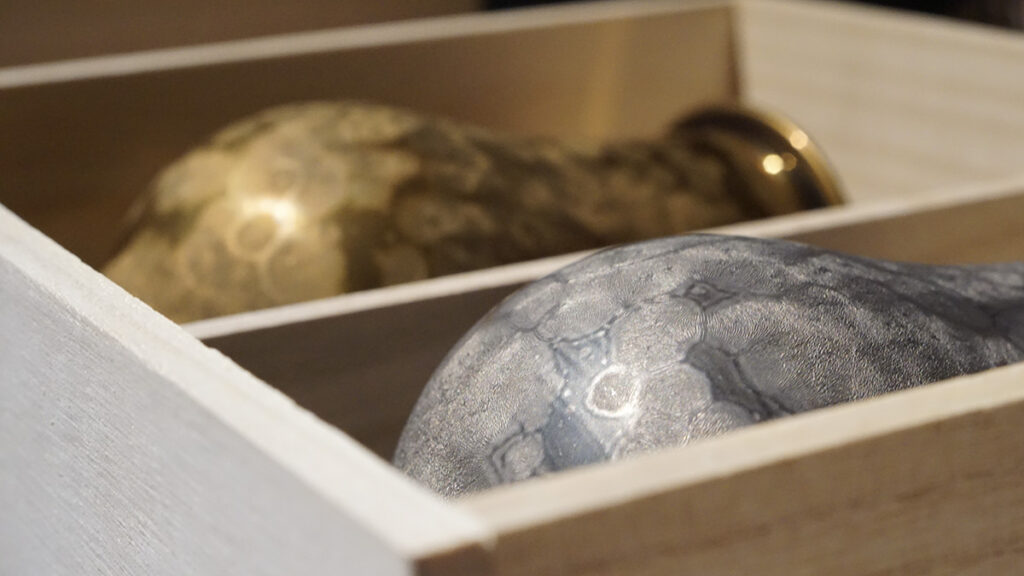
The M Gold is priced at 23,000 yen (excluding tax), and The M Platinum is priced at 21,000 yen (excluding tax). They are only available for sale at Cokuun and the Arita Porcelain Lab flagship store.
“Baccarat glasses from 100 years ago still hold significant value. There’s a certain longing for items like that.” He remarked.
Our ongoing discussion delved into the pinnacle achievements of that era—luxury goods where value is derived more from style, manufacturing era, and the history woven into the object rather than the individual creator’s name. Can we replicate something similar today? It’s a conversation about whether artisans from Arita, carrying on a 400-year tradition, can create coffee cups in the style of 21st-century Arita ware that will possess enduring value.
As our conversation subsided, I looked at the slightly chilled coffee in the cup, which seemed enhanced by the vessel itself. It occurred to me that this Arita porcelain by Matsumoto not only embodied modernity like their previous designs but also seemed to possess a certain strength. It made me consider that there might be more to it. At least, I anticipated that soon there would be a time to revise the way we describe Matsumoto—an innovator who reversed the dire situation of a traditional industry—into something more heroic.
Cokuun
https://cokuun.com/
For details and reservations, please visit the website
arita porcelain lab
https://aritaporcelainlab.com/
Arita Porcelain Lab flagship store
1-11-3 Kami-Kohira, Arita-cho, Nishimatsuura-gun, Saga Prefecture
TEL: 0955-29-8079


